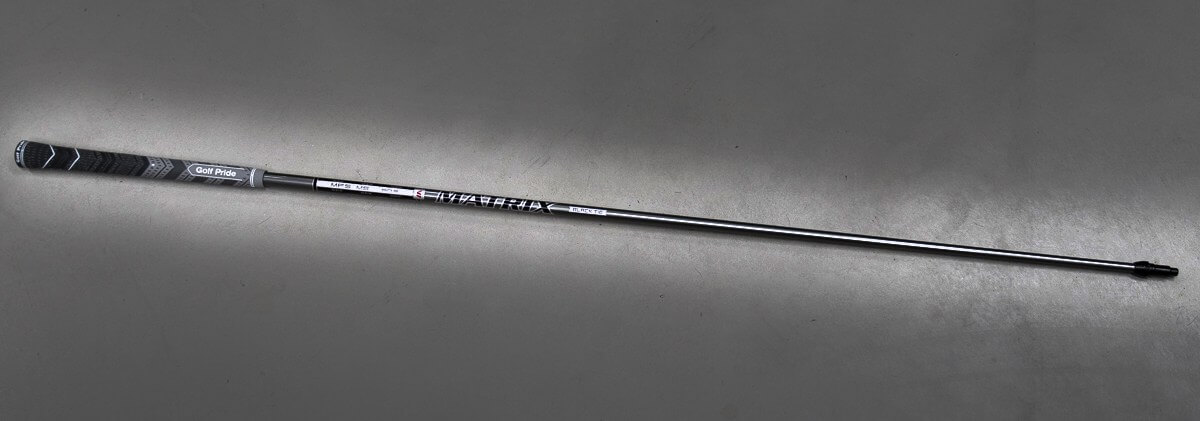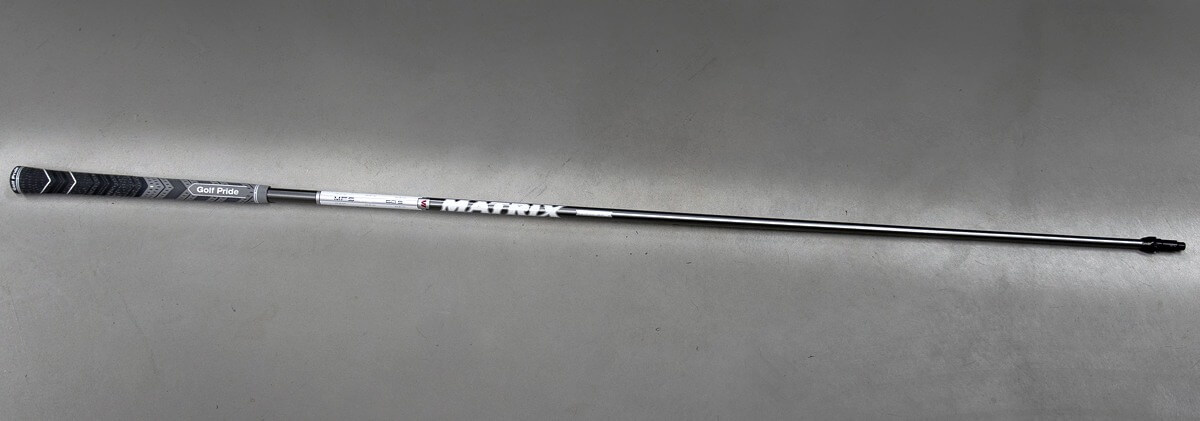MFS – The Next Generation
Evolution is inevitable. Case in point, this Matrix’s release of a new generation of its popular MFS (Matrix Flight System) shafts. The 3-shaft series includes the notoriously low-spinning Black Tie (M5), the mid-launch Red Tie (Q5), and the high launch/mid spin White Tie (X5). Building off input from tour players, its advisory staff, and premium fitting accounts, Matrix has tweaked the updated designs with enhanced lower resin, ultra-high modulus material with the goal of optimizing the launch characteristics of each shaft while creating a little more space between them.
In simple terms, the company wanted to provide more separation between the individual models; the Black Tie should be lower launch than the previous model, while the White should launch higher. Red stays in the middle.
The MFS Breakdown
Before we get to the data, let’s take a closer look at each of the shafts in the MFS 5 lineup to see where it fits in the lineup and who Matrix believes is the target golfer.
M5 Black Tie:
The stiffest of the three profiles in the MFS family, the Black Tie has been re-engineered to produce lower launch and spin with an improved feel. This is accomplished through a medium firm butt section with stiffer mid and tip sections. The Black Tie is best suited for aggressive swingers who generate at least stiff-level clubhead speed.
Some testers commented that the Black Tie felt stiffer than both the Red and the White, though I would add the boardiness of the M3 is all but gone. Our data (below) suggests that many testers struggled to bring the ball back to center with the stiffer profile.
Q5 Red Tie:
The mid-launch/mid-spin option (relative to the M5 and Q5) of the MFS family, the Q5 has the firmest butt section in the MFS family. However, the shaft softens quickly as the design transitions to a constant stiffness mid-section before tapering to a more active (softer) tip section.
As you’d expect from a shaft in the middle of a lineup, the Q5 is well-suited for a wide variety of swing types and players looking for mid launch and mid spin.
X5 White Tie:
Compared to the X4, the X5 offers improved stability without sacrificing the smooth feel that the White Tie is known for. It’s a profile is designed to produce high launch with moderate spin. This is accomplished via the softest butt section in the MFS lineup, along with medium firm mid and tip sections.
The profile is well-suited for smoother tempo players of any swing speed looking for a bit higher launch without excessive spin. The White Tie is also a popular choice as a fairway wood shaft.
While feel is notoriously subjective, our testers did comment on the smoother feel of the White Tie, many saying it felt easier to swing.
THE DISCLAIMER
Before we get to the details and the results of our test, it’s important that we again point out that golf shafts will perform differently for different golfers, and as such, data from our shaft tests seldom aligns perfectly with the manufacturer’s stated expectations. A variety of golfer-dependent variables including, but not limited to, speed, tempo, transition, and release point will impact how a shaft will perform for an individual golfer. So, while we actively encourage experimentation with your equipment, we wouldn’t advise spending big money on any shaft without first spending some quality time with a reputable fitter.
How We Tested
- 5 Testers with handicaps from Scratch and 6 participated in this test.
- The swing speeds of our testing pool ranged from just under 100 to upwards of 115.
- All testers hit stiff flex shafts within the 60g range.
- Shafts were outfitted with Club Conex UNI-FIT adapters, Golf Pride MCC Plus 4 Grips, and all shots were hit with the same 10.5° driver head.
- With our algorithms adjusted to be more aggressive in dropping shots to provide a more consistent data sample, outliers were removed using Median Absolute Deviation.
- To establish a reasonable baseline for our comparison, we used impact location data from the Foresight GC2 HMT to further limit our averages to only those shots struck within the central region of the club face.
- Shots were recorded using a Foresight GC2 Launch Monitor with attached HMT.
- All testers hit Bridgestone B330-RX Golf Balls.
Matrix MFS 5 Series Shaft Data
Observations:
- While the averages are similar across all shafts and most metrics, the individual golfer breakdown (also provided) shows a more significant variation in performance between shaft models.
- While not universally true, independent of launch variables, we very often find that one shaft stands out for being appreciably better, or appreciable worse for given tester.
- The data generally support our conclusions from previous shaft tests – the shaft that a golfer hits most left will often be the one that spins least.
- Within our data, it is the Black Tie which would seem to have produced the most unexpected result. In digging deeper, we found that a majority of our testers found it more difficult to square the face relative to the path, resulting in higher launch, more fade bias (right-favoring axis tilt) and with that, higher backspin.
- In normalizing the data to a consistent 12° launch, we find that the Black Tie is the lowest spinning, followed by White, and then Red. Essentially – the results are as described by Matrix, provided we bring the data closer to an all things equal comparison.
The Recommendations
As we always do, we recommend you visit a qualified fitter instead of blindly buying your next shaft. It’s far too easy to throw your money away. That said we will offer broad recommendations based on our findings.
- As Matrix claims, the Black Tie is best suited for aggressive swingers, though we would add it’s likely best suited for someone who might otherwise fight a hook. If you have a too-high spin problem caused by a weak fade or otherwise flaring the ball out to the right, the Black Tie isn’t likely to reduce your spin.
- The White Tie is noteworthy for its smoother feel and its accuracy. While we won’t suggest it will be the straightest for our golfers, among our test pool it was the most accurate. The data suggests the White Tie may be your best chance to mitigate a fade.
- The Red stands-out, perhaps, for being different from the other two. It’s your middle of the bell curve option. The data is anything but definitive here, which is why I’m inclined to suggest that the Red Tie is your best bet when neither the Black or White Tie works well for you.
Specs, Pricing, and Availability
Matrix MFS 5 Shafts are available through authorized Matrix dealers and most OEMs. Retail Price is $350 per shaft.
For more information, visit Matrixshafts.com.



















Golfinnut
7 years ago
I agree with the findings of the Black Tie. I have one & I cannot square the face for the life of me. Everything is left out to the right unless I really aggressively come through the shot, which requires me to change my swing. So needless to say that one is sitting in the corner with all the other shafts that don’t work. HA!